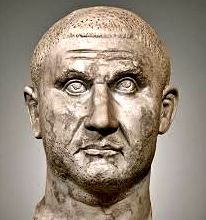
Battle of Adrianople |
year: 3243 July 324 |
| Decisive victory of Constantine the Great over the army of Licinius | ★ ★ ★ ★ ★ |
|
enemy: Romans (Civil War)
|
location: On river Evros, near Adrianople (modern Edirne, Turkey). The battlefield was on the confluence of the Evros with a tributary (Ardas)
|
accuracy:
●●●●●
|
|
battle type: Pitched Battle |
war: Civil Wars of the Tetrarchy (306-324 AD) |
modern country:
Turkey |
| ▼ The Byzantines(emperor: Tetrarchy) | ▼ The Enemies | |
| Commander: | Constantine I the Great | Licinius, Augustus of the East |
| Forces: | 130,000 | 165,000 |
| Losses: | more than 34, 000 killed |
| Background story: |
| The underlying causes of the battle were -again- the rivalries that started after the collapse of Diocletian's Tetrarchy. Constantine had prevailed in the West after the battle in the Milvian bridge (312) and didn’t avoid a conflict with the emperor of the East (in 316), when he defeated Licinius and conquered all the Balkan Peninsula, except Thrace. A peace had been arranged that lasted 7 yeras. By 324 Constantine was ready to renew the conflict and when his army, in pursuit of a raiding Visigothic, or possibly Sarmatian, force, crossed into Licinius' territory, a convenient casus belli was created. Licinius overacted, his reaction was taken as hostile and the civil war started again. Constantine invaded Thrace with a large army. |
The Battle: |
 Licinius Eventually, Constantine used a ruse to get his troops across the Hebrus. Having noticed a suitable crossing point where the river narrowed and was overlooked by a wooded hillside, he ordered material and ropes to be conspicuously assembled at another place on the river, well away from his chosen crossing, to give the impression that he intended to build a bridge to cross there. On the wooded hillside he secretly assembled 5,000 foot archers and a force of cavalry. He then lead his cavalry over the river crossing at the narrows and fell on the enemy unexpectedly. The surprise attack was a complete success and the remainder of his army then crossed at the same point. What followed, in the words of the historian Zosimus, was “a great massacre”. Licinius was slightly injured and fled to the city of Byzantium. |
Noteworthy: |
| Constantine's forces fought, for the first time in a major battle, under his talismanic Christian standard, the labarum. The appearance of this talisman provoked enthusiasm to his troops, while dismayed those of Licinius. |
Aftermath: |
| The battle had been one of the largest-scaled armed clashes of the 4th century on a spot where many other battles have been fought (“The more disputed spot in the World History”). The battle did not end the civil war but was the beginning of the end for Licinius. |
|
|
